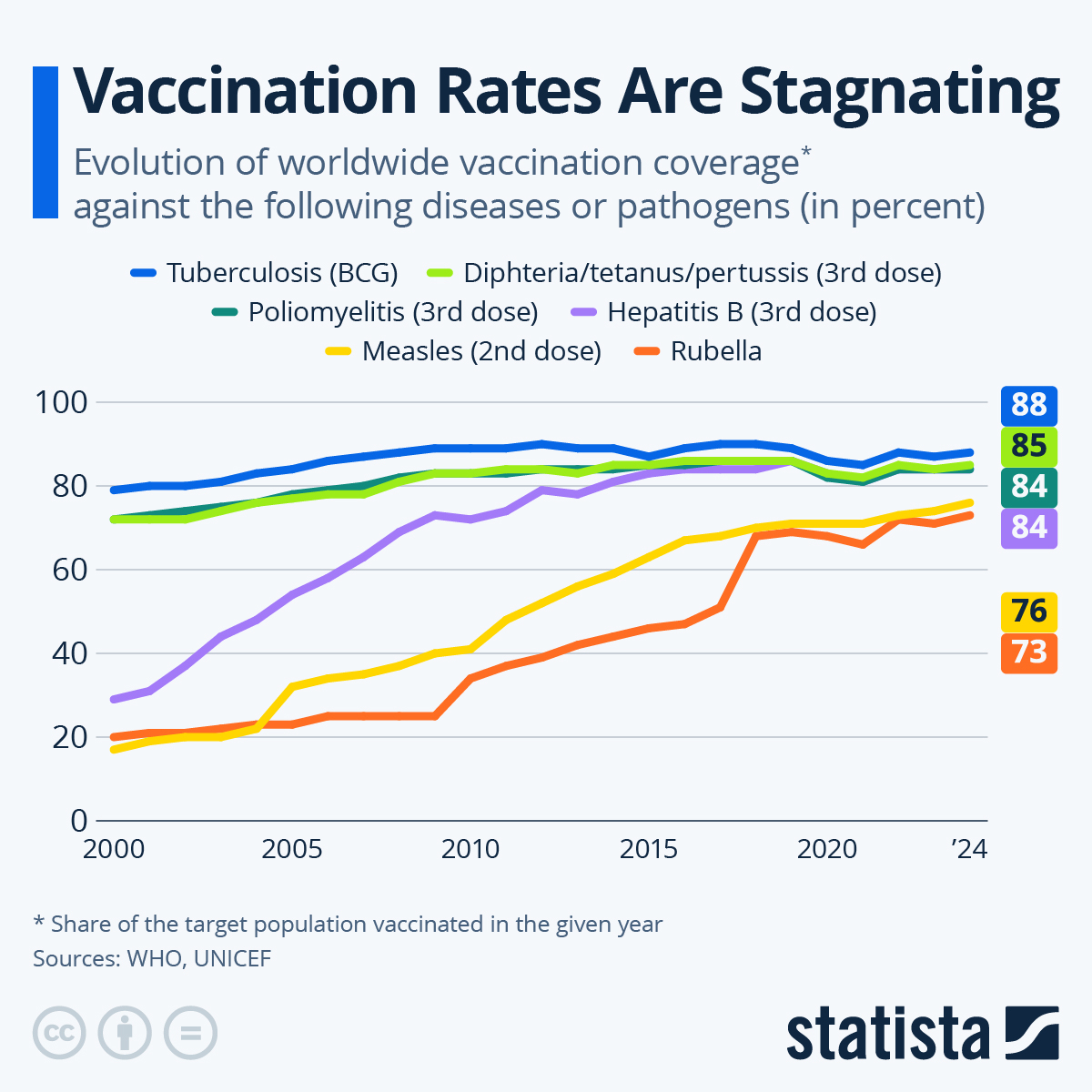Vaccination Rates Are Stagnating
Data published last week by the World Health Organization (WHO) and UNICEF confirm that global vaccination coverage has stagnated in recent years.
In 2024, 14.3 million children worldwide were classified as “zero-dose”, meaning they had not received a single vaccine.
This number has barely changed over the past two years (14.5 million in 2022) and remains higher than the 12.8 million recorded in 2019, before the Covid-19 pandemic disrupted health services.
More than half of these unvaccinated children live across around 30 countries currently affected by fragility, conflict or other vulnerabilities.
As Statista's Anna Fleck shows in the following chart, the percentage of children who received three doses of the DTP vaccine (which protects against diphtheria, tetanus, and pertussis) stood at 85 percent in 2024. This is slightly below from the 86 percent reached between 2016 and 2019.
You will find more infographics at Statista
Vaccination rates for other diseases have also stagnated: polio coverage remained at 84 percent in 2024 (down from 86 percent between 2017 and 2019), and tuberculosis vaccination held steady at 88 percent (compared to a peak of 90 percent in 2017 and 2018).
As for measles, global coverage improved significantly between 2004 and 2016 but has since slowed.
In 2024, the global measles vaccination rate reached 76 percent, up from 71 percent in 2019, yet still well below the 95 percent threshold needed to effectively prevent outbreaks.
According to the WHO, 60 countries experienced “major or disruptive” measles outbreaks in 2024 - nearly double the number recorded in 2022.
The primary reason for low vaccination coverage remains limited access to vaccines in certain regions.
However, the WHO also highlights the growing threat posed by misinformation about science and vaccines.
Loading...
